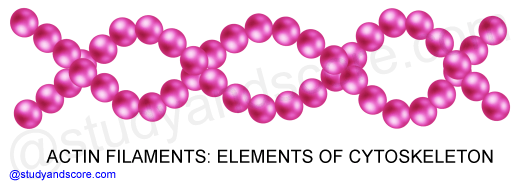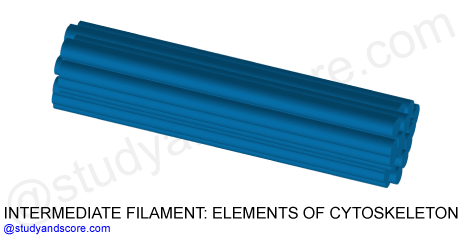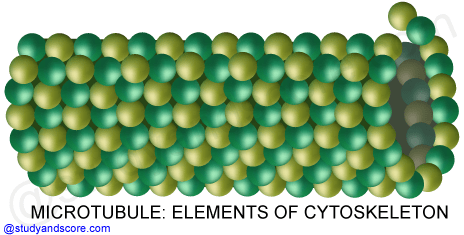Initially cytoskeleton was not given much importance but with the discovery and use of electron microscope in cytological studies, the importance of this dynamic network of protein fibers was explored. The cytoskeleton is cellular framework contained within the cell in the cytoplasm. The cytoskeleton is made up of protein fibers sacttered in an orderly fashion to form a network like structure. The cytoskeleton is present in both eukaryotic as well as prokaryotic cells.
It is the structure that maintains cell shape and gives protection to the cell. It renders the cell with the ability of movement. It also plays important role in intracellular transport and cellular division. It provides a suitable surface for the chemical reactions to take place.
The following three main protein systems constitute the cytoskeleton:
All these three protein systems are dynamic structures, constantly changing shape through polymerization/depolymerization and interactions with other proteins in the cell. Each type of fiber looks and functions differently.
Actin filaments are also known as Microfilaments as they are the thinnest of all the cytoskeletal filaments. They are long and are composed of two intertwined globular protein chains of about 6nm in diameter. These chains can rapidly assemble and disassemble themselves. They are found just under the cell membrane and help in resisting tension and maintaining cell shape.

Also microfilaments are essential in transduction and cytokinesis. Along with myosin they play a major role in muscle contraction process. Actin filaments are also involved in cell movement such as cell crawling and pinching the cell into two during cell division. Some functions of actin filaments:
They are rope-like structures formed by overlapping bundles of proteins. They are 10 nm in diameter and are more stable compared to actin filaments. Intermediate filaments function in the maintenance of cell-shape by bearing tension. For example, in our skin cells, the protein keratin is an intermediate filament which provides shape and protection against over-stretching.

Intermediate filaments organize the internal 3D structure of the cell, anchoring all the organelles in place and serving as structural components of the nuclear lamina and sarcomeres. They also participate in some cell-cell and cell-matrix junctions.
The following are different types of intermediate filament,
They are hollow cylinders of about 23 nm. Microtubules are made up of protein caled tubulin. Tubulin subunits are arranged to form hollow tubes. Microtubules can grow or shrink in size by adding or removing these tubilin subunits. They play a vital role in the mvement of the chromsomes during cell division. They attach to chromosome and separate them after the formation of the daughetr cells.

Some functions of microtubules are as follows,

- Share with your friends! -
Login to post your comment here...
- or with social Account -